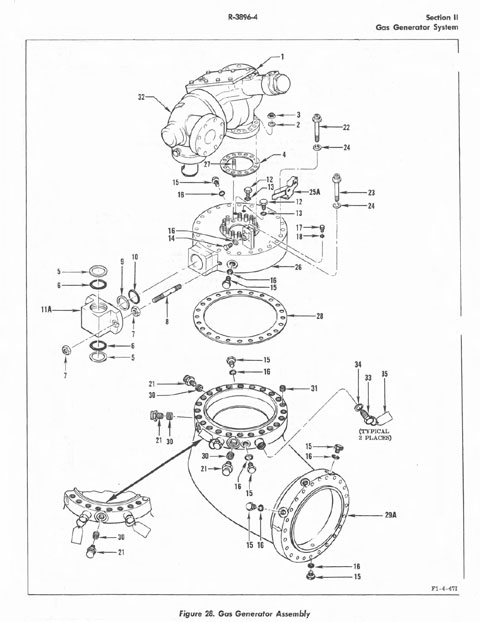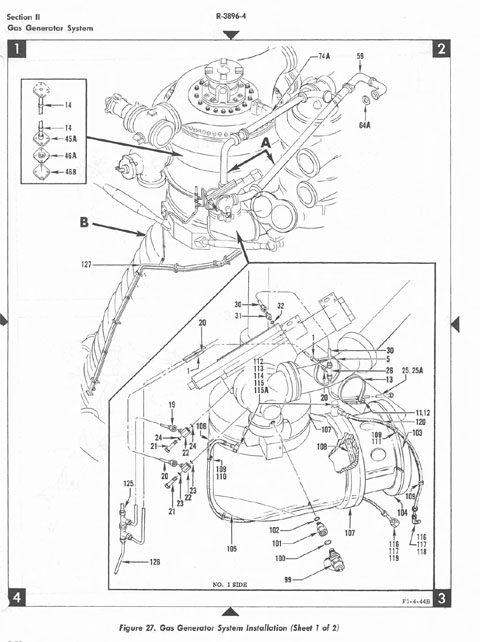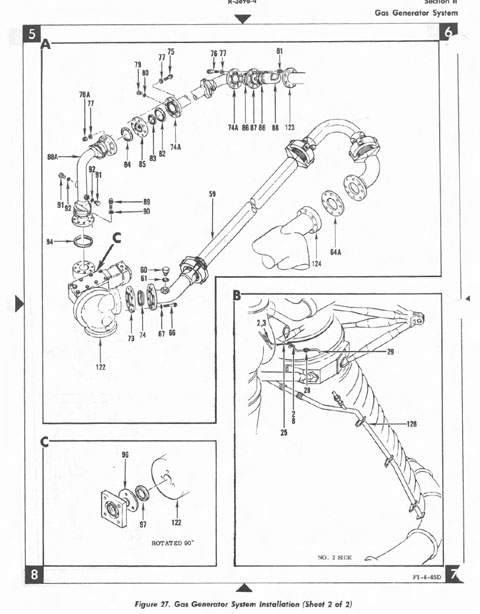 Space News space history and artifacts articles Messages space history discussion forums Sightings worldwide astronaut appearances Resources selected space history documents |
If you have previously registered, but forgotten your password, click here.
| ||||||||
| randy | Ah! The good old days! | |||||||
| MrSpace86 | I wonder which museums were raided  I have seen quite a few F-1 engines and I wonder if I have photos of any of the ones they used. I have seen quite a few F-1 engines and I wonder if I have photos of any of the ones they used. | |||||||
| Robert Pearlman | As the article notes: For these tests, which included a 20-second hot fire on Jan. 10, the team removed a gas generator from an F-1 engine that was stored at Marshall and another in almost pristine condition from the Smithsonian's National Air and Space Museum in Washington, DC. | |||||||
| Orthon | Don't let our leaders see this... they will quickly move to stop it. The glory of the Apollo is taboo to them. | |||||||
| Robert Pearlman | Some additional details regarding the provenance of the F-1 gas generator, courtesy the Associated Press: The engine, known to NASA engineers as No. F-6049, was supposed to help propel Apollo 11 into orbit in 1969, when NASA sent Neil Armstrong and two other astronauts to the moon for the first time. The flight went off without a hitch, but no thanks to the engine — it was grounded because of a glitch during a test in Mississippi and later sent to the Smithsonian Institution, where it sat for years. | |||||||
| mikej | The engine, known to NASA engineers as No. F-6049, was supposed to help propel Apollo 11 into orbit in 1969Readers of the second edition of Alan Lawrie's Saturn will recognize that F-6049 was originally installed in S-IC-11 (the first stage of the Apollo 16 launch vehicle), not Apollo 11. It received minor damage during static firing when a neighboring engine caught on fire and was eventually replaced and refurbished. A NASA engineer in one of the videos released with the story misspoke, and all the news outlets repeated that information, without any fact-checking. | |||||||
| hlbjr | Coates said a total of 85 F-1 engines were used on 17 Apollo flights without a single failure.What 17 flights is Coates talking about? I count F-1's flying on Apollo 4, 6, 8, 9, 10, 11, 12, 13, 14, 15, 16, 17, and Skylab 1. That's 13 flights. What are the other four flights? | |||||||
| garyd2831 | I would love to see a firing of an F-1 engine as a complete unit not just components of one. | |||||||
| p51 | Does anyone know the last time one of these was fired up before this test? I assume it's been a long time before now... | |||||||
| LeeH | I actually spent three days last week at MSFC in Huntsville covering the second set of F-1 gas generator test firings. The story of why the F-1 is being brought back to life is a fascinating tale of coincidence--a team of young propulsion engineers at MSFC wanted to study large RP-1/LOX engines and they kicked off the initial effort, while at the same time the Dynetics + PWR team was looking at a large RP-1/LOX engine to pitch for their part of the upcoming SLS Advanced Booster competition. Dynetics/PWR was able to work with the MSFC team on the F-1 GG testing, and the results have been excellent. I was privileged enough to be invited by the team to witness two of GG test firings last Wednesday. The afternoon test was scrubbed because of a LOX valve issue, but the morning test was absolutely thrilling. I'm working on a huge feature article on the whole process for Ars Technica (my employer), and I hope to have it up next month. It's an amazing story, a true bottom-up engineering-driven effort, and as a tremendous Apollo fanatic it's one that's very near to my heart. I'll certainly post a link in this thread when the story goes live. | |||||||
| Robert Pearlman | Lee, that's excellent to hear and I look forward to reading your article. I had hoped to see one of those test firings, but the logistics didn't work out. I think it is fascinating that in this instance, museum artifacts may be directly responsible for the eventual design of their successor. | |||||||
| ApolloEra | I have been collecting for about a year and have been watching the forums for a few months, this is my first post. I am mostly interested in Apollo hardware. The news of the gas generator is interesting because I believe I have a manifold from an F-1 used to connect the gas generator to the turbine. This is supported by the F-1 manual showing this joint having 24 bolts and measuring 8.780 inches which is identical to this part: The problem is that in an assembled F-1 the manifold is covered by a sheet metal heat shield, as seen here (thanks HeroicRelics). I also didn't have any luck looking at the F-1 still on display in front of the Rocketdyne facility on Canoga Ave (which is about 2 miles from my house). Note that the H-1 appears to have a similar smaller manifold with the 4 internal vanes. I appreciate your input! | |||||||
| SpaceAholic | Your component is not F-1 affiliated (it is associated with the Atlas/Atlas-Centaur launch vehicle)... | |||||||
| tfrielin | quote:Coates is wrong and your count is correct. Thirteen Saturn Vs were launched as per your tally and they flew on the strength of a total of 65 F-1 engines, all of which performed beautifully. I was in front of the VAB in 1973 to see the last Saturn V launched and it was an experience never to be forgotten. | |||||||
| ApolloEra | quote:Thank you for the reply. I imagine you are referring to the LR-105/LR-89? I was not able to find a picture of a similar part installed on the LR-105. Cheers... | |||||||
| SpaceAholic | Look closely at your component and note the presence of a Convair astronautics inspection/acceptance stamp. The anti-vortex baffles are used in many propellant feed systems for eddie suppression and are not unique to Saturn engines or gas generators. Here's a breakdown of the F-1 gas generator... is your part represented?  | |||||||
| ApolloEra | Thanks for your help. Wishful thinking on my part... great illustrations. Now I see the Convair (CVA) stamp. Thanks again...
| |||||||


